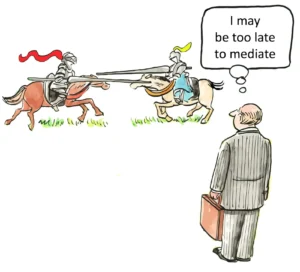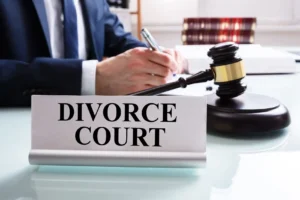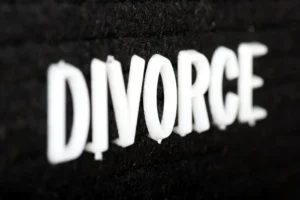Personal Injury Claim: Do You Have a Case?
Determining whether you have a valid personal injury claim requires careful evaluation of the circumstances surrounding your injury and the applicable laws. A personal injury case arises when an individual suffers harm due to another party’s negligence or intentional misconduct. The legal system provides a mechanism for injured parties to seek compensation for their losses, but not all injuries automatically qualify for a lawsuit. Understanding the key elements of a personal injury claim can help you assess the strength of your case and decide whether to pursue legal action.
The foundation of most personal injury claims is the concept of negligence. To establish negligence, four essential elements must be proven: duty of care, breach of duty, causation, and damages. The first element, duty of care, refers to the legal obligation one party has to act reasonably to prevent harm to others. This duty varies depending on the relationship between the parties and the context of the situation. For instance, drivers owe a duty of care to other road users, property owners have a duty to maintain safe premises for visitors, and healthcare providers owe a duty to provide competent medical care to their patients.
Once a duty of care is established, the next step is to demonstrate that the defendant breached this duty. A breach occurs when the responsible party fails to meet the standard of care expected in the given circumstances. This could involve actions such as a driver running a red light, a store owner failing to clean up a spill, or a doctor making a critical error during surgery. The breach of duty must be directly linked to the plaintiff’s injuries, satisfying the causation element. This means proving that the defendant’s actions or inactions were the proximate cause of the harm suffered.
The final element in establishing a personal injury claim is damages. The plaintiff must show that they suffered actual losses as a result of the defendant’s negligence. These damages can be economic, such as medical expenses and lost wages, or non-economic, like pain and suffering and loss of enjoyment of life. In some cases, punitive damages may also be awarded if the defendant’s conduct was particularly egregious or reckless.
Personal injury law encompasses a wide range of scenarios, each with its unique challenges and considerations. Car accidents are among the most common types of personal injury cases, often involving complex liability issues and interactions with insurance companies. In these cases, establishing fault may require evidence such as police reports, witness statements, and expert testimony from accident reconstruction specialists.
Slip and fall incidents, which fall under the category of premises liability, present their own set of challenges. Property owners have a duty to maintain safe conditions for visitors, but the extent of this duty can vary depending on the status of the visitor (invitee, licensee, or trespasser) and the nature of the hazard. Proving liability in these cases often requires demonstrating that the property owner knew or should have known about the dangerous condition and failed to address it in a timely manner.
Medical malpractice claims are particularly complex, requiring a thorough understanding of medical standards and procedures. These cases typically involve allegations that a healthcare provider failed to meet the accepted standard of care, resulting in injury to the patient. Establishing medical malpractice often requires expert testimony to demonstrate how the provider’s actions deviated from the standard of care and directly caused harm to the patient.
Product liability cases arise when a defective product causes injury to a consumer. These claims can be based on design defects, manufacturing defects, or failure to provide adequate warnings or instructions. In some jurisdictions, strict liability may apply, meaning that the plaintiff does not need to prove negligence on the part of the manufacturer or seller, only that the product was defective and caused injury.
Workplace injuries present unique considerations in personal injury law. While many workplace accidents are covered by workers’ compensation insurance, which typically precludes lawsuits against employers, there are exceptions. Third-party liability claims may be possible if someone other than the employer or a co-worker caused the injury. Additionally, if the employer’s conduct was intentional or grossly negligent, it may be possible to pursue a personal injury claim outside the workers’ compensation system.
The process of pursuing a personal injury claim involves several stages, each with its own challenges. The initial investigation and gathering of evidence are crucial steps in building a strong case. This may involve collecting police reports, medical records, witness statements, and photographic or video evidence of the accident scene or injuries. In some cases, expert witnesses may be necessary to provide specialized knowledge or analysis to support the claim.
Once sufficient evidence has been gathered, the next step is typically to file a claim with the relevant insurance company. This initiates the negotiation process, during which the injured party or their attorney attempts to reach a fair settlement with the insurer. Insurance companies often employ tactics to minimize payouts, such as disputing the severity of injuries or arguing that the plaintiff was partially at fault for the accident. Navigating these negotiations requires a thorough understanding of personal injury law and insurance practices.
If a satisfactory settlement cannot be reached through negotiations, the next step may be to file a lawsuit. This initiates the formal legal process, which includes discovery (the exchange of information between parties), depositions (sworn out-of-court testimony), and potentially, trial. The litigation process can be lengthy and complex, requiring careful preparation and strategic decision-making at each stage.
One of the significant challenges in personal injury cases is accurately valuing the claim. While economic damages such as medical bills and lost wages can be relatively straightforward to calculate, non-economic damages like pain and suffering are more subjective. Factors that may influence the value of a claim include the severity and permanence of injuries, the impact on the plaintiff’s quality of life, and the strength of the evidence supporting liability.
The concept of comparative negligence adds another layer of complexity to personal injury cases. Many jurisdictions follow a comparative negligence rule, which reduces the plaintiff’s recovery by their percentage of fault in causing the accident. For example, if a plaintiff is found to be 20% at fault for a car accident, their damages award would be reduced by 20%. Some states follow a modified comparative negligence rule, which bars recovery if the plaintiff’s fault exceeds a certain threshold (often 50% or 51%).
The statute of limitations is a critical consideration in personal injury cases. Each jurisdiction has specific time limits within which a lawsuit must be filed, and failing to meet these deadlines can result in the loss of the right to pursue compensation. The statute of limitations can vary depending on the type of case and the jurisdiction, making it essential to consult with an attorney promptly after an injury occurs.
In recent years, technological advancements have begun to play an increasingly significant role in personal injury cases. The use of digital evidence, such as surveillance footage, social media posts, and data from wearable devices, has become more prevalent in establishing liability and damages. For instance, data from a fitness tracker might be used to demonstrate changes in a plaintiff’s activity levels before and after an injury.
The rise of telemedicine has also impacted personal injury cases, particularly in the context of medical evidence. Digital health records and remote medical consultations can provide detailed documentation of injuries and treatments, potentially strengthening claims. However, this shift towards digital medical records also raises new challenges in terms of data privacy and security.
Alternative dispute resolution (ADR) methods, such as mediation and arbitration, have gained popularity in personal injury cases. These approaches offer a faster and often less costly alternative to traditional litigation. Mediation involves a neutral third party facilitating negotiations between the parties to reach a mutually agreeable settlement. Arbitration, on the other hand, involves a neutral arbitrator hearing evidence from both sides and making a binding decision. While ADR can be an effective way to resolve disputes, it’s important to carefully consider the potential advantages and disadvantages before agreeing to these processes.
The impact of social media on personal injury cases cannot be overstated. Insurance companies and defense attorneys often scour plaintiffs’ social media profiles for evidence that might contradict their claims about the severity of their injuries or the impact on their daily lives. A seemingly innocent post or photo could potentially undermine a plaintiff’s case. As such, personal injury attorneys often advise their clients to be cautious about their social media activity during the pendency of their case.
Emerging technologies like autonomous vehicles are poised to create new challenges in personal injury law. As self-driving cars become more prevalent, questions of liability in accidents involving these vehicles will become more complex. Determining fault in accidents involving a mix of human-driven and autonomous vehicles may require new legal frameworks and specialized expertise.
The ongoing evolution of personal injury law also reflects broader societal changes. For instance, the increasing recognition of the importance of mental health has led to greater consideration of psychological injuries in personal injury cases. Emotional distress and mental anguish are now more commonly included as components of damages, reflecting a more holistic approach to assessing the impact of injuries on victims’ lives.
Climate change and environmental factors are also beginning to influence personal injury law. As extreme weather events become more frequent, questions of liability for injuries resulting from these events may arise. For example, property owners may face increased scrutiny regarding their preparedness for severe weather conditions.
The intersection of personal injury law and public health has come into sharp focus in recent years, particularly in the context of global health crises. The COVID-19 pandemic, for instance, has raised novel questions about liability for disease transmission in various settings, from workplaces to healthcare facilities. These cases present unique challenges in establishing causation and navigating evolving public health guidelines.
Mass tort litigation represents another significant area of personal injury law, often involving large numbers of plaintiffs who have been harmed by a common product or event. These cases, which can include pharmaceutical liability or environmental contamination claims, require specialized legal strategies and often involve complex scientific evidence.
The role of insurance in personal injury cases is multifaceted and often crucial to the outcome. Understanding the types of insurance coverage available, such as liability insurance, uninsured/underinsured motorist coverage, and umbrella policies, is essential for both plaintiffs and defendants. Insurance coverage limits can significantly impact the potential recovery in a personal injury case, and navigating the intricacies of insurance law is often a key component of these claims.
The concept of vicarious liability adds another dimension to personal injury cases. This legal doctrine holds one party responsible for the actions of another based on their relationship. For example, an employer may be held liable for the negligent actions of an employee performed within the scope of their employment. Understanding when and how vicarious liability applies can be crucial in determining the appropriate parties to name in a lawsuit.
Expert witnesses play a critical role in many personal injury cases, particularly those involving complex medical issues or technical aspects. These experts can provide specialized knowledge to help establish liability, causation, and damages. However, the use of expert witnesses also presents challenges, including ensuring their credibility and effectively communicating complex information to a judge or jury.
The impact of a personal injury can extend far beyond the immediate physical harm, affecting various aspects of the victim’s life. Loss of consortium claims, for instance, recognize the impact of injuries on the plaintiff’s relationships with family members. These claims can compensate spouses or family members for the loss of companionship, affection, and support resulting from the plaintiff’s injuries.
In conclusion, determining whether you have a valid personal injury case requires a comprehensive evaluation of numerous factors. From establishing the basic elements of negligence to navigating complex legal and procedural requirements, pursuing a personal injury claim can be a challenging process. The evolving landscape of personal injury law, influenced by technological advancements, societal changes, and emerging risks, adds further complexity to these cases. While this article provides an overview of key considerations, consulting with an experienced personal injury attorney is often the best way to assess the strength of your case and determine the most appropriate course of action. An attorney can provide personalized guidance based on the specific circumstances of your case and help you navigate the legal process to seek fair compensation for your injuries.
Website citations:
- https://www.nycbar.org/get-legal-help/article/personal-injury-and-accidents/common-causes-of-personal-injury/
- https://saslawgroup.com/personal-injury/looking-forward-personal-injury-legal-trends-for-2024/
- https://www.chrisearley.com/blog/navigating-the-legal-spectrum-exploring-the-different-types-of-personal-injury-claims/
- https://pottengerlaw.com/2024/12/01/personal-injury-law-recap/
- https://lawisland.com/common-challenges-in-personal-injury-cases-long-island-and-how-to-overcome-them/
- https://usawire.com/how-personal-injury-settlements-work-in-2024/
- https://khalillawgroup.com/personal-injury/personal-injury-unique-challenges/
- https://www.gibblawfirm.com/emerging-trends-and-predictions-in-personal-injury-law-in-2024/
- https://www.ranzlaw.com/understanding-personal-injury-cases-your-guide-to-navigating-legal-challenges/
- https://fzlaw.com/personal-injury-claim-process-common-challenges-faced/




















